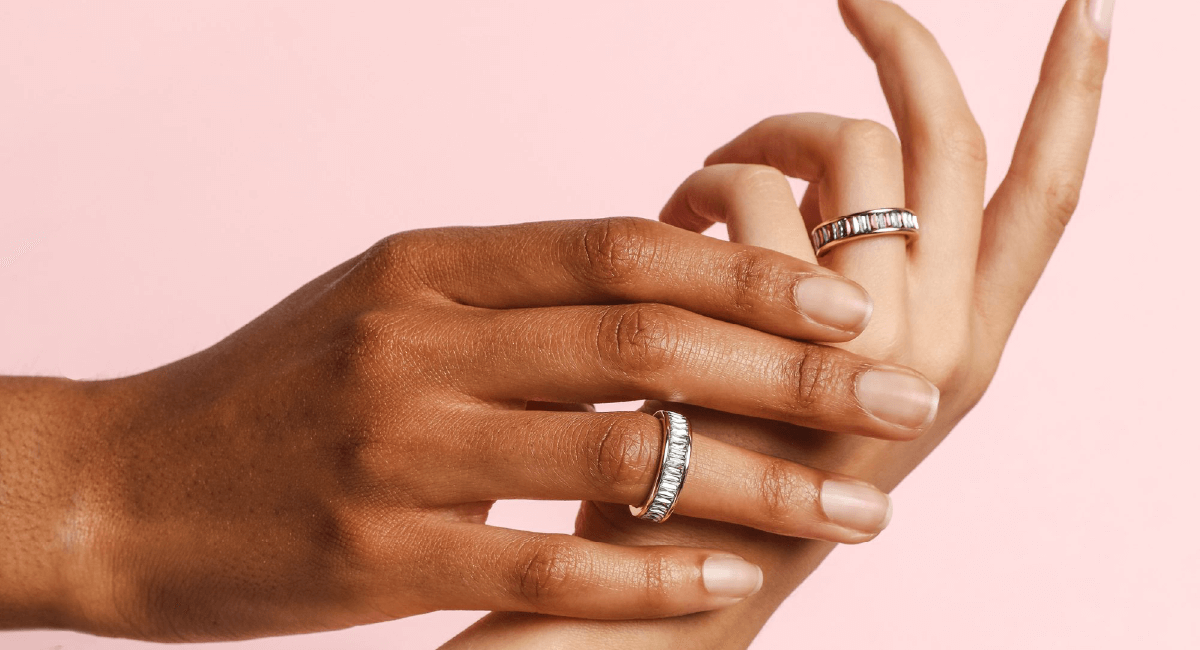Finding the perfect ring is like discovering a treasure, but ensuring it fits just right adds a layer of complexity. With the rising popularity of lab-grown diamonds, getting the right ring size is crucial for that perfect fit. But fear not, we’ve got you covered with this comprehensive guide on how to measure lab diamond ring size accurately.
1. Why Lab Diamonds?
Lab-grown diamonds offer a sustainable and ethical alternative to mined diamonds without compromising on quality or beauty. Plus, they often come at a more affordable price point, making them an attractive option for many.
2. Understanding Ring Sizing
Before delving into the methods of measuring ring size, it’s essential to grasp what ring size actually means. Ring size refers to the circumference of the finger on which the ring will be worn. Getting an accurate measurement ensures that the ring sits comfortably and securely on the finger without slipping or feeling too tight.
3. Methods for Measuring Ring Size
There are several methods you can use to measure ring size, ranging from DIY techniques to professional measurements.
4. DIY Paper Strip Method
One of the simplest ways to measure ring size at home is by using the paper strip method. Here’s how:
- Cut a thin strip of paper.
- Wrap it around the base of your finger.
- Mark where the paper overlaps.
- Measure the length of the strip and compare it to a ring size chart.
5. String Method
Similar to the paper strip method, the string method involves wrapping a piece of string around your finger and then measuring it against a ruler. Make sure the string is snug but not too tight for an accurate measurement.
6. Using Ring Sizing Kits
If you prefer a more precise approach, consider investing in a ring sizing kit. These kits typically come with a set of plastic or metal rings in various sizes, how to measure lab diamond ring size, allowing you to find the perfect fit comfortably at home.
7. Professional Measurement
For the most accurate results, visit a jeweler who can professionally measure your ring size using specialized tools. This option is especially recommended if you’re purchasing an expensive or custom-made ring.
8. Tips for Accurate Measurement
Regardless of the method you choose, here are some tips to ensure precision in your measurements:
- Measure your ring size at the end of the day when your fingers are slightly swollen.
- Avoid measuring your ring size when your hands are cold, as this can cause your fingers to shrink.
- Measure your ring size multiple times to ensure consistency.
9. Common Mistakes to Avoid
When measuring your ring size, be wary of common mistakes that can lead to inaccurate results, such as using the wrong finger or pulling the measuring tool too tightly.
10. Considering Different Finger Shapes
Keep in mind that finger shapes can vary, affecting how a ring fits. For example, wider fingers may require a slightly larger size, while slender fingers may need a smaller size for a snug fit.
11. Online Tools and Resources
If you prefer the convenience of online shopping, lab made diamonds, there are numerous websites offering virtual ring sizers and printable ring size charts. While these tools can be helpful, it’s essential to double-check their accuracy by comparing them to other methods.
12. Lab Diamond Ring Size Specifics
Measuring the size of a lab diamond ring follows the same principles as traditional diamond rings. However, due to the precision of lab-grown diamonds, accuracy in sizing becomes even more critical to ensure a perfect fit.
13. Adjusting Ring Size
If you find that your ring doesn’t fit quite right, don’t fret! Most rings can be resized by a professional jeweler to achieve the perfect fit without compromising the integrity of the ring.
14. Conclusion
Measuring your lab diamond ring size accurately is the first step towards finding the ring of your dreams. Whether you opt for a DIY method or seek professional assistance, taking the time to get an accurate measurement ensures that your ring fits comfortably and securely for years to come.

